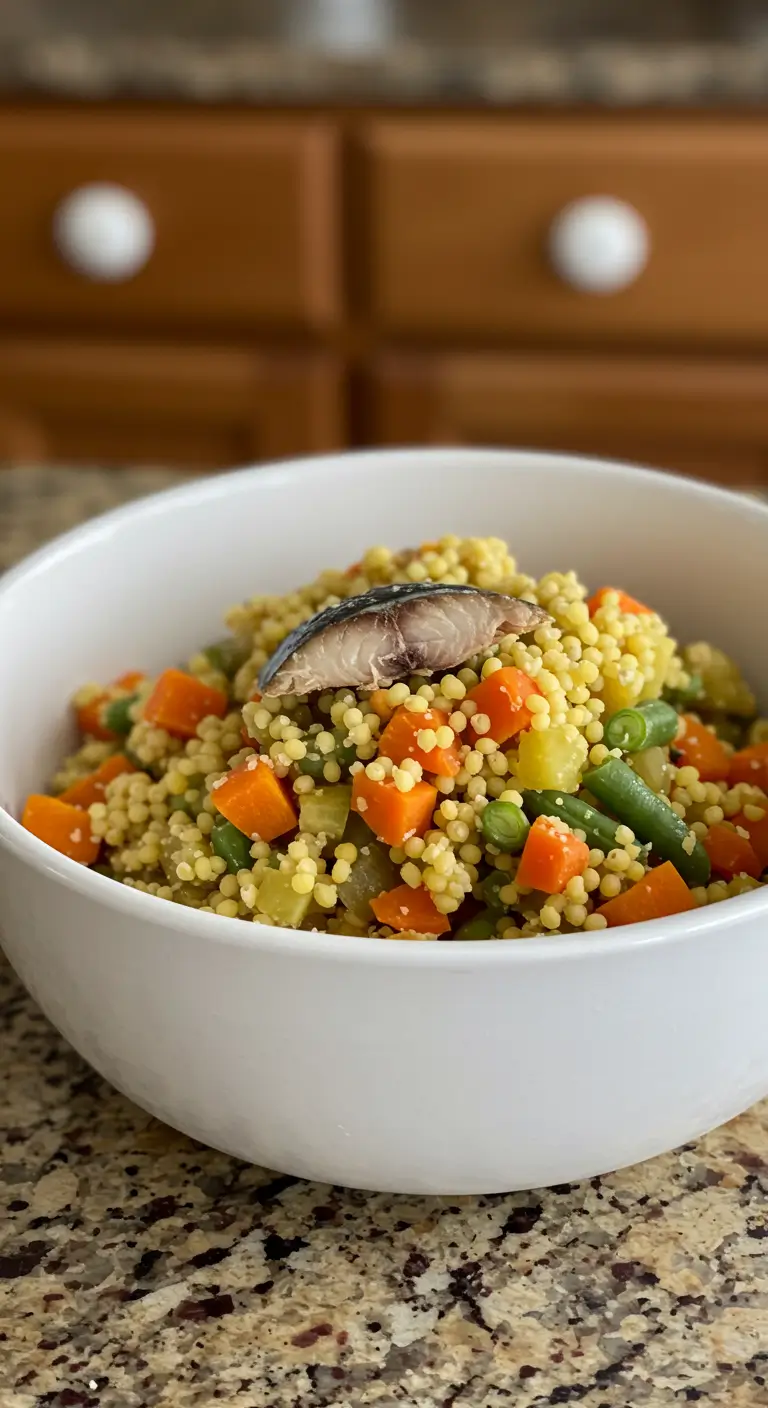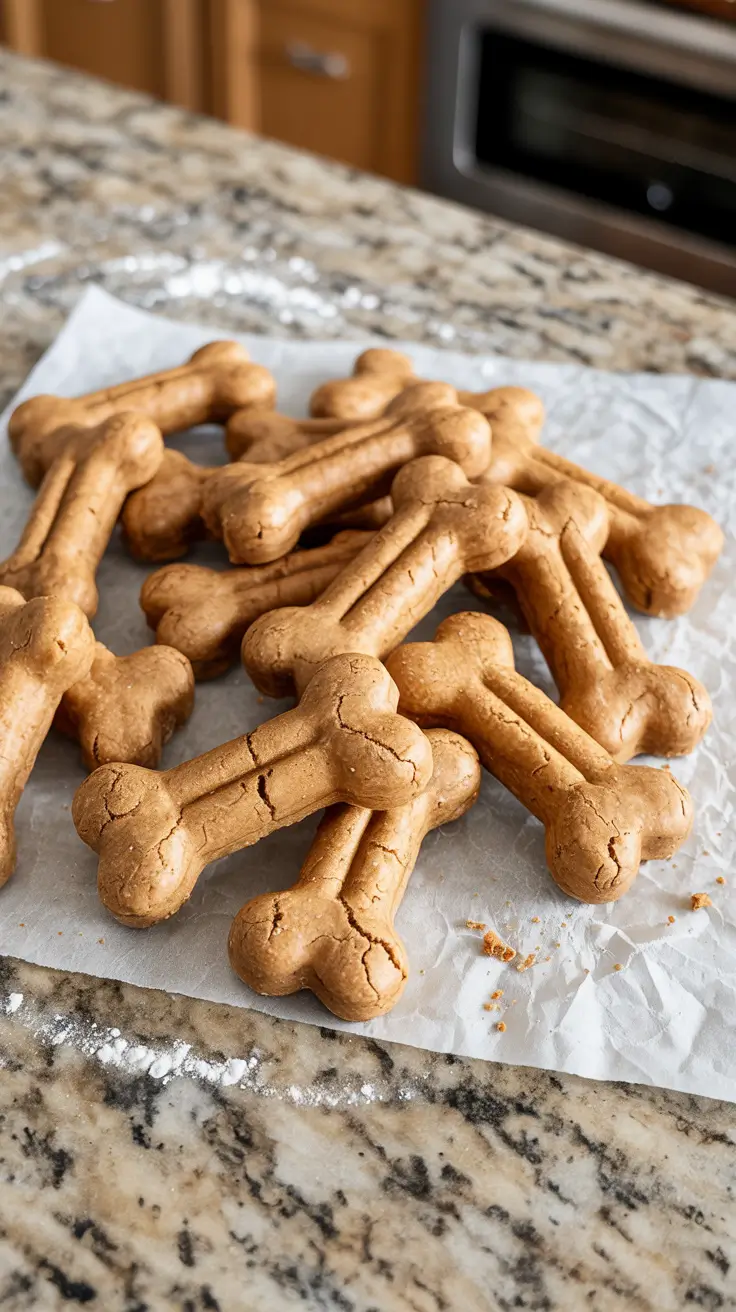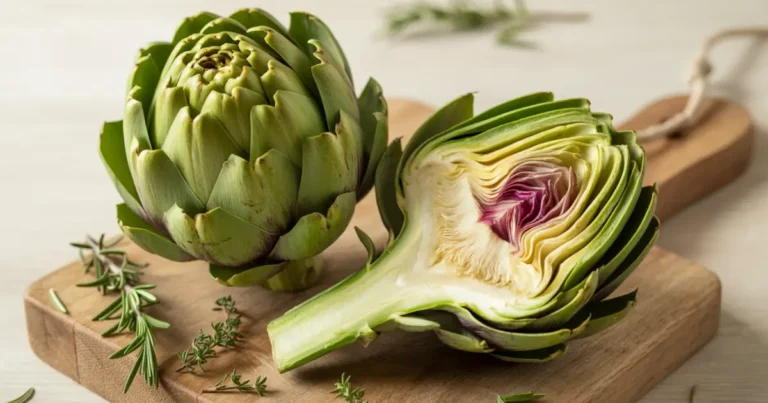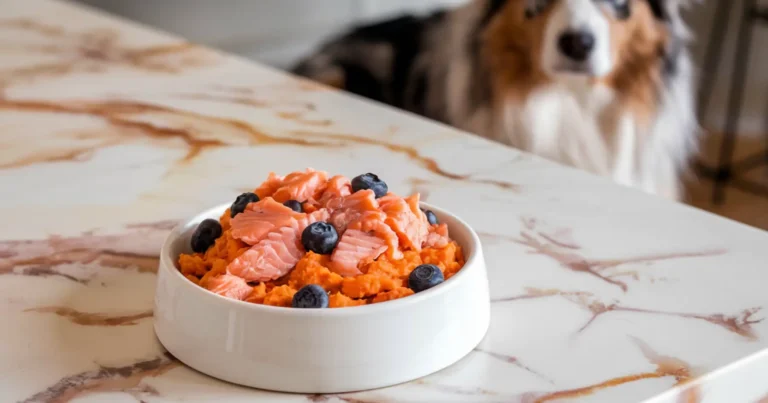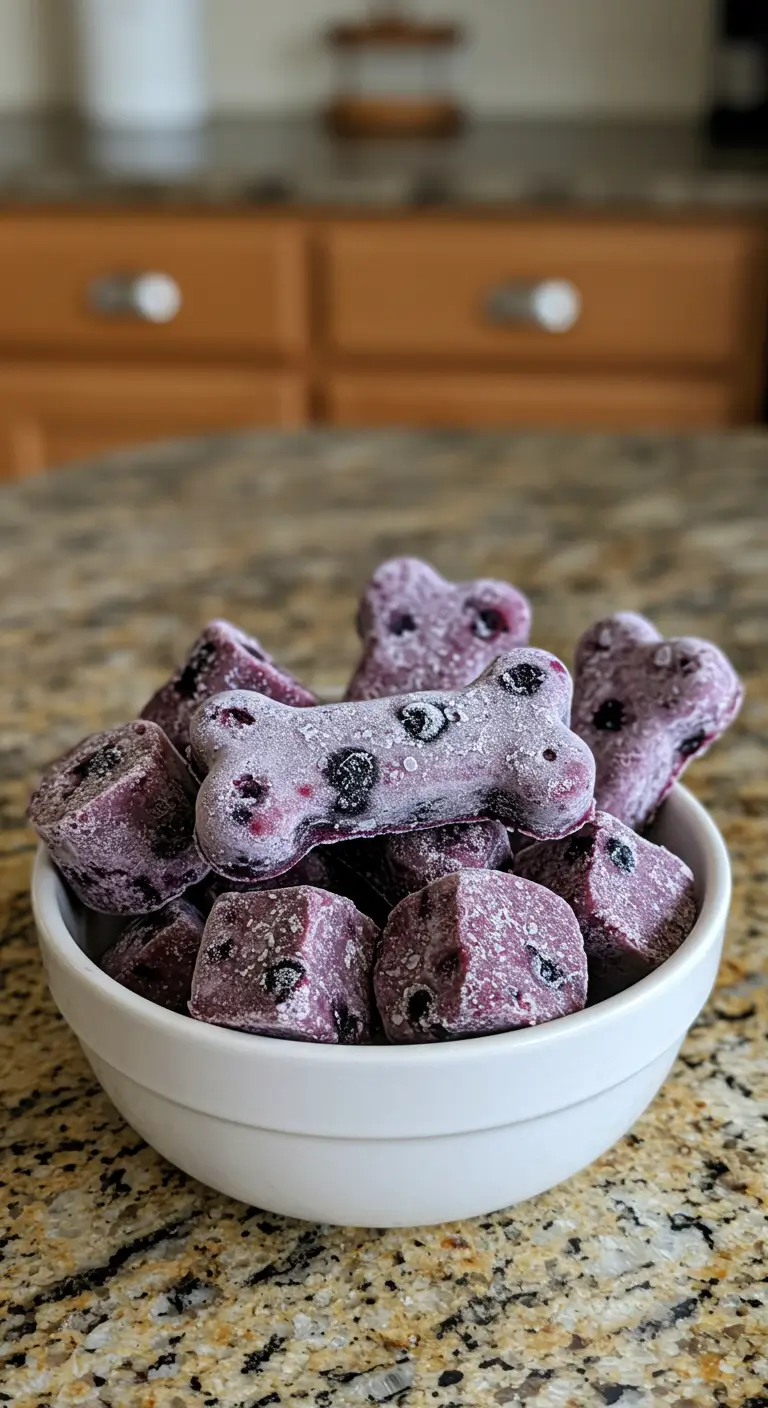Ultimate Mackerel Dog Food Recipe with Millet (30-Min Easy!)
You know that look your dog gives you when they smell something absolutely incredible cooking? Well, get ready to see that face light up because we’re about to whip up something that’ll have your furry friend doing happy dances around the kitchen.
This mackerel dog food recipe isn’t just another homemade dog food recipe – it’s basically a gourmet feast that happens to be ridiculously good for your pup. And the best part? You probably won’t need to make a special grocery run since most of these ingredients are kitchen staples.
If you’re looking for more amazing fish options, check out these 6 best fish dog food recipes your pup will love for a complete collection of healthy alternatives.
Table of Contents
Why Mackerel Makes the Perfect Dog Food Base
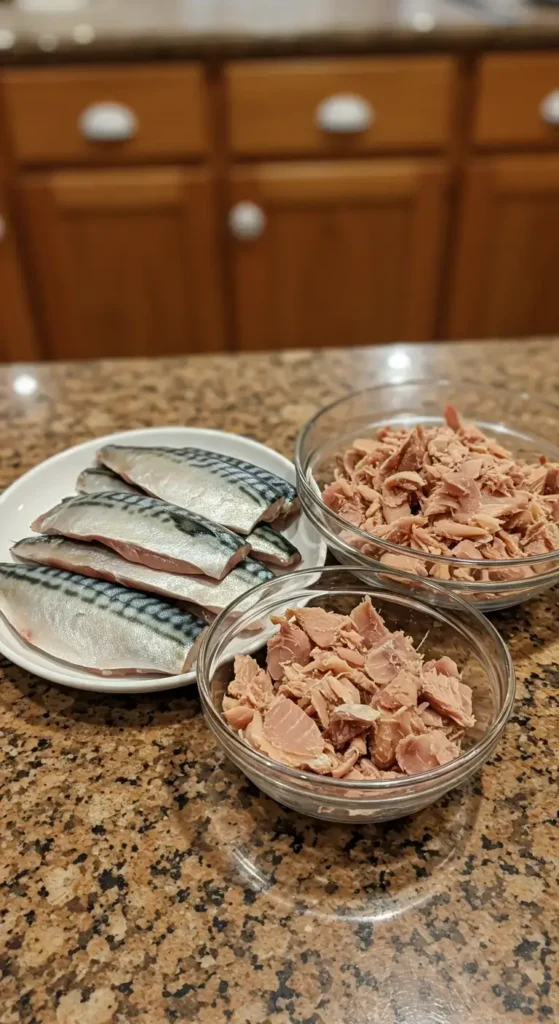
Let’s be real – mackerel doesn’t get nearly enough credit in the dog food world. While everyone’s obsessing over salmon (which is great, don’t get me wrong), mackerel is sitting there being the underappreciated superhero of the fish world.
Here’s what makes mackerel absolutely awesome for dogs:
- Omega-3 powerhouse – We’re talking serious brain and coat benefits here
- High-quality protein that’s easily digestible
- Rich in vitamin D for strong bones and immune support
- Budget-friendly compared to other fish options
- Sustainable seafood choice (your eco-conscious heart will thank you)
I’ve been making this mackerel dog food recipe for my own pups for over two years, and honestly? Their coats have never looked shinier. Plus, one of my dogs used to have joint issues, and I swear the omega-3s have made a noticeable difference in his mobility.
For variety, you might also love this ultimate salmon dog food recipe, which offers similar omega-3 benefits with a different flavor profile.
The Magic of Millet in Dog Food
Now, before you roll your eyes and think “millet is just bird food,” hear me out. This tiny grain is actually a nutritional goldmine that most dog parents completely overlook.
Why millet rocks for dogs:
- Gluten-free – perfect for sensitive stomachs
- Easy to digest – even for pups with grain sensitivities
- Packed with B vitamins for energy and nervous system health
- Good source of magnesium for heart and muscle function
- Won’t spike blood sugar like some other grains
I discovered millet by accident when I ran out of rice one day and grabbed whatever grain I had in the pantry. Best mistake ever! My dogs actually seem to prefer it, and it cooks faster than brown rice – win-win 🙂
Essential Ingredients for Your Mackerel Dog Food Recipe

Here’s what you’ll need to create this mackerel dog food recipe that’ll have your pup begging for seconds:
Main Ingredients:
- 2 cans mackerel in water (about 8 oz total, drained)
- 1 cup millet (uncooked)
- 2 cups low-sodium chicken or vegetable broth
- 1 medium sweet potato (peeled and diced)
- 1 cup green beans (fresh or frozen, chopped)
- 1/2 cup carrots (diced small)
Nutritional Boosters:
- 1 tablespoon coconut oil (for healthy fats)
- 1/4 cup plain Greek yogurt (probiotics for gut health)
- 1 teaspoon dried parsley (fresh breath, anyone?)
Pro tip: Always use mackerel packed in water, not oil. Your dog doesn’t need the extra fat, and water-packed varieties are way easier on sensitive stomachs.
If you’re interested in other fish-based recipes, this amazing sardine dog food recipe offers similar nutritional benefits with a smaller fish option.
Step-by-Step Mackerel Dog Food Recipe Preparation
Alright, let’s get cooking! This mackerel dog food recipe is honestly so simple that you could probably make it with your eyes closed (but please don’t – safety first!).
Step 1: Get Your Millet Going
Start by rinsing your millet under cold water – this removes any bitter taste and helps it cook more evenly. In a medium saucepan, combine the millet with 2 cups of broth and bring to a boil. Once it’s bubbling, reduce heat to low, cover, and simmer for about 15 minutes.
Step 2: Prep Your Veggies
While the millet is doing its thing, dice up that sweet potato into small, dog-friendly pieces. We’re talking pea-sized here – nobody wants their pup choking on a massive chunk of sweet potato.
Step 3: Steam the Vegetables
Steam the carrots, green beans, and sweet potato in a steamer basket over boiling water until they are fork-tender. This usually takes about 8-10 minutes. If you don’t have a steamer, just boil them in a little water until soft.
Step 4: Prepare the Mackerel
Drain your mackerel and flake it with a fork, checking carefully for any bones. I know canned mackerel is supposed to be boneless, but I’m paranoid about these things – better safe than sorry!
Step 5: Bring It All Together
Once your millet is cooked and fluffy, let it cool slightly. Mix in the flaked mackerel, steamed vegetables, and coconut oil. Stir everything together until it’s well combined.
Step 6: Final Touches
Let the mixture cool to room temperature, then fold in the Greek yogurt and parsley. The yogurt should be added last to preserve those beneficial probiotics.
Your homemade mackerel dog food recipe is now ready! For another delicious option, try this best tuna dog food recipe with pumpkin which combines the benefits of fish with digestive-friendly pumpkin.
Nutritional Breakdown and Benefits
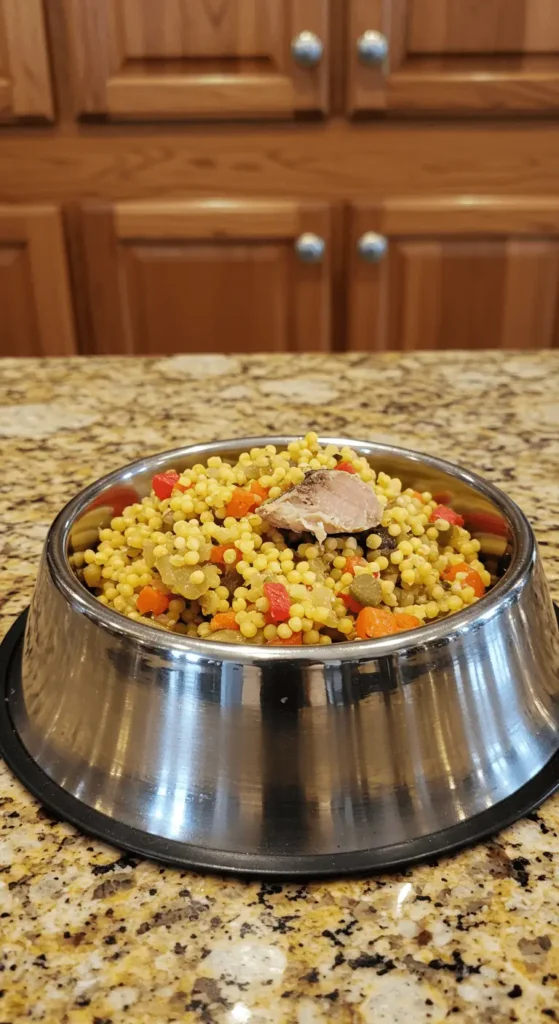
Let me break down why this mackerel dog food recipe is basically a superfood meal for your pup:
| Nutrient | Benefit | Source in Recipe |
|---|---|---|
| Omega-3 Fatty Acids | Coat health, brain function, joint support | Mackerel |
| Complete Protein | Muscle development and maintenance | Mackerel |
| Complex Carbohydrates | Sustained energy, digestive health | Millet |
| Beta-Carotene | Eye health, immune support | Sweet potato, carrots |
| Fiber | Digestive health, weight management | Vegetables, millet |
| Probiotics | Gut health, immune function | Greek yogurt |
Real talk: I’ve tried a lot of homemade dog food recipes, and this mackerel dog food recipe consistently gets the best reaction from both my dogs and their vet. The combination of high-quality protein and easily digestible carbs seems to be the sweet spot for most pups.
Speaking of protein-rich fish recipes, this ultimate cod dog food recipe provides a milder flavor option that’s perfect for dogs with sensitive palates.
Serving Sizes and Storage Tips
Serving Guidelines:
- 1/2 to 3/4 cup per meal for small dogs (10–25 lbs).
- 3/4 to 1.5 cups per meal for medium dogs (25–50 lbs).
- 1.5 to 2 cups per meal for large dogs (50-75 lbs).
- 2 to 3 cups per meal for giant breeds (75+ lbs).
Remember, these are starting points! Every dog is different, and factors like age, activity level, and metabolism all play a role in how much your pup needs.
Storage Made Simple:
- Refrigerator: Keeps fresh for up to 5 days in airtight containers
- Freezer: Portion into meal-sized containers and freeze for up to 3 months
- Meal prep hack: I make a big batch on Sunday and portion it into mason jars for the week
Customization Options for Picky Eaters
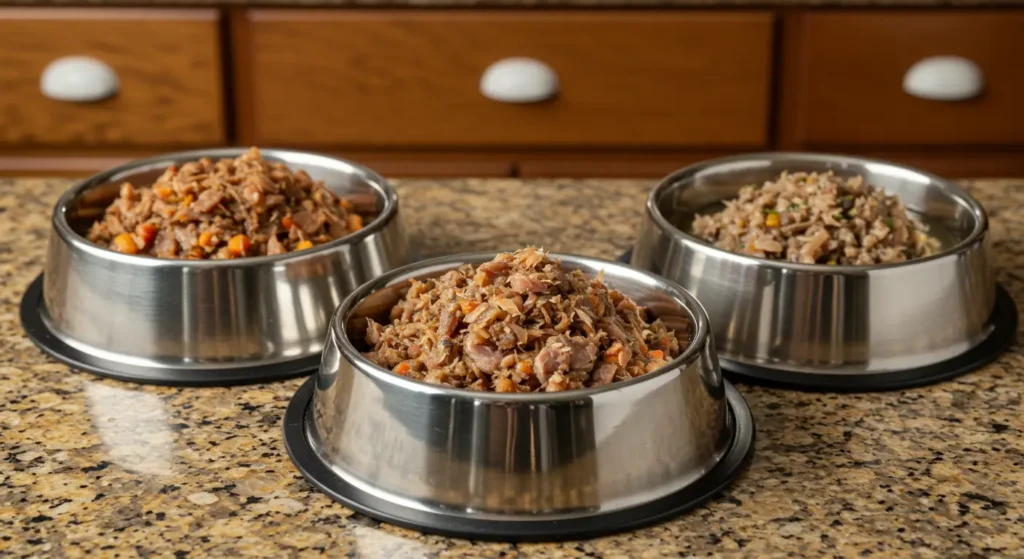
Got a finicky pup? No worries – this recipe is super flexible. Here are some tweaks that have worked wonders for my friends’ picky dogs:
For texture-sensitive dogs:
- To achieve a smoother consistency, pulse the mixture in a food processor.
- Add a bit more broth to make it more “soupy”
For dogs who need extra calories:
- Add an extra tablespoon of coconut oil
- Mix in some cooked quinoa for additional protein
For dogs with specific allergies:
- Swap millet for brown rice or quinoa
- Use bone broth instead of regular broth for extra flavor
Common Mistakes to Avoid
I’ve made my fair share of cooking blunders over the years, so let me save you some headaches:
Don’t oversalt the broth – dogs don’t need nearly as much sodium as we do. Always choose low-sodium options.
Don’t skip the cooling step – hot food can burn your dog’s mouth and destroy those beneficial probiotics in the yogurt.
Don’t make it too bland – a little parsley or a tiny bit of turmeric can make this mackerel dog food recipe way more appealing without being harmful.
Don’t forget to check for bones – even canned fish can sometimes have sneaky little bones hiding in there.
Transitioning Your Dog to Homemade Food
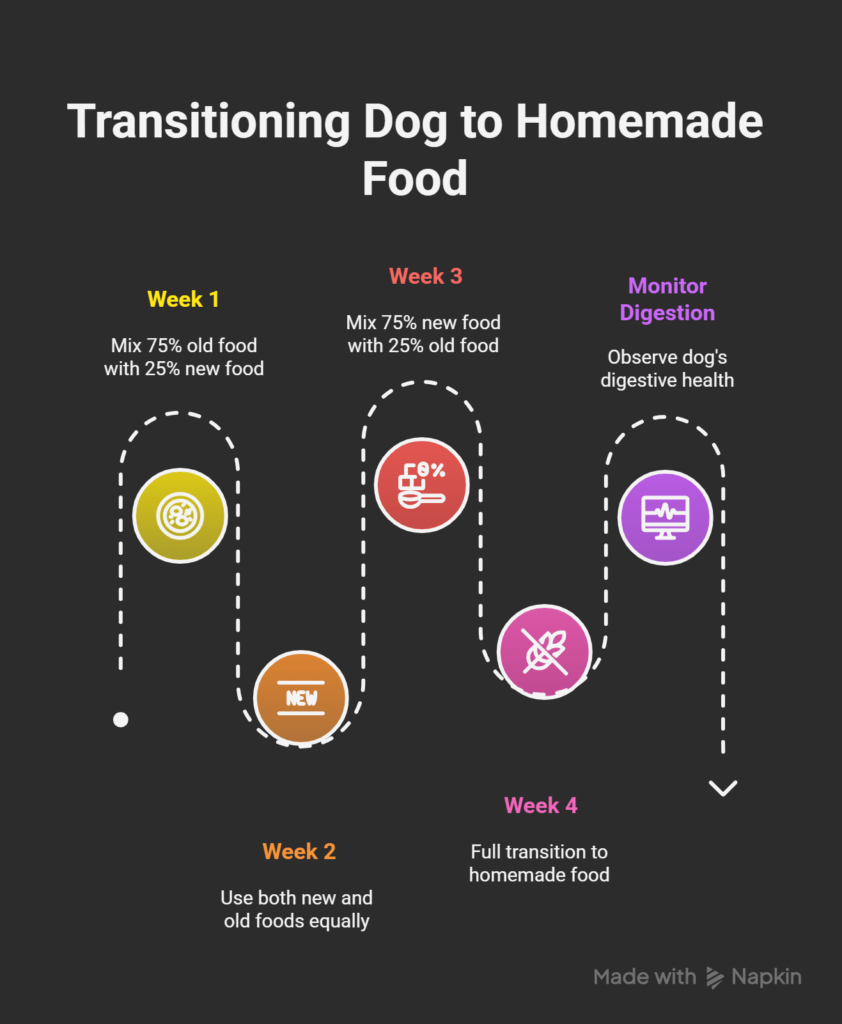
Here’s the thing about switching to homemade dog food – you can’t just swap it out overnight and expect your dog’s digestive system to be cool with it. Believe me, I had to learn this the hard way :/
Week 1: Combine 75% old food with 25% new. Week 2: Use both new and old foods equally. Week 3: Use 75% new food, 25% old food Week 4: Full transition to homemade food
Keep an eye on your pup’s digestion during this transition. A little bit of loose stool is normal, but if it persists or gets worse, slow down the transition process.
Signs Your Dog is Thriving on This Recipe
After a few weeks of feeding this mackerel dog food recipe, you should start noticing some pretty awesome changes:
Physical improvements:
- Shinier, softer coat
- Better breath (thanks, parsley!)
- More consistent, well-formed stools
- Increased energy levels
- Improved skin condition
Behavioral changes:
- More excitement at mealtime
- Better focus and alertness
- Improved appetite
- Less begging for table scraps (they’re already getting the good stuff!)
IMO, the biggest indicator of success is when your dog starts doing that happy wiggle dance every time they see you getting their food ready. That’s when you know you’ve nailed it!
Key Takeaways
Making your own mackerel dog food recipe isn’t just about giving your pup a tasty meal – it’s about taking control of their nutrition and showing them some serious love through food. This mackerel dog food recipe hits all the right notes: it’s nutritious, budget-friendly, and surprisingly simple to make.
The combination of omega-3-rich mackerel and digestible millet creates a powerhouse meal that supports everything from coat health to joint function. Plus, the added vegetables provide essential vitamins and fiber that many commercial dog foods lack.
Remember, the best mackerel dog food recipe is the one your dog actually wants to eat and that fits into your lifestyle. This recipe checks both boxes – it’s delicious enough to get even picky eaters excited about dinner time, and simple enough that you won’t dread meal prep day.
So go ahead, give this mackerel dog food recipe a try. Your pup’s tail wags and shiny coat will be all the thanks you need. And hey, if you’re feeling fancy, you might even catch yourself wanting to try a bite – it smells that good when it’s cooking!
Final Thoughts
After years of experimenting with homemade dog food recipes, I can honestly say this mackerel dog food recipe has become my go-to meal for special occasions and regular rotation alike. It’s one of those mackerel dog food recipe variations that makes you feel like a rockstar dog parent while actually being pretty foolproof to make.
The best part? Watching your dog’s reaction when they realize this isn’t just another boring bowl of kibble. That moment of pure joy and excitement is worth every minute spent in the kitchen. Plus, knowing exactly what’s going into your pup’s body gives you the kind of peace of mind that money can’t buy.
Whether you’re dealing with a dog with food sensitivities, trying to boost your senior pup’s nutrition, or just wanting to spoil your furry family member, this mackerel dog food recipe delivers on all fronts. Give it a shot – I have a feeling both you and your dog are going to love the results!
Frequently Asked Questions
Can I use fresh mackerel instead of canned?
Absolutely! Fresh mackerel is actually even better nutritionally for this mackerel dog food recipe. Just make sure to cook it thoroughly and remove all bones carefully. Steam or bake it without any seasonings, then flake it just like you would with canned.
How long does this mackerel dog food recipe keep in the refrigerator?
When kept in the refrigerator in airtight containers, this mackerel dog food recipe can last up to five days. I always make sure to smell it before serving – if it smells off at all, toss it and make a fresh batch.
Is millet safe for dogs with grain allergies?
Great question! Millet is actually a seed, not a true grain, and it’s naturally gluten-free. Many dogs with grain sensitivities can handle millet just fine in this mackerel dog food recipe. However, if your pup has severe allergies, always check with your vet first and consider doing a small test batch.
Can puppies eat this mackerel dog food recipe?
While this mackerel dog food recipe is nutritionally dense, growing puppies have very specific nutritional needs that are best met with a complete and balanced puppy food. You can offer small amounts as treats, but it shouldn’t replace their main puppy diet without veterinary guidance.
What if my dog doesn’t like the texture of this mackerel dog food recipe?
Some dogs are texture-sensitive! Try pulsing the mackerel dog food recipe mixture in a food processor to make it smoother, or add a bit more broth to create a more stew-like consistency. You can also try mashing the sweet potato more thoroughly during preparation.
Can I meal prep this mackerel dog food recipe for the week?
Definitely! This recipe for mackerel dog food is ideal for meal planning. I portion it into glass containers or mason jars for the week. Just remember to let it cool completely before refrigerating, and always give it a good stir before serving since ingredients can settle.
References and Resources
For additional information on canine nutrition and homemade dog food safety, consider consulting these reliable sources:
- American Kennel Club (AKC) – Canine Nutrition Guidelines
- Association of American Feed Control Officials (AAFCO) – Pet Food Nutrition Standards
- National Research Council – Nutrient Requirements of Dogs and Cats
Your Dog Tried It? Drop a Review Below!
There are no reviews yet. Be the first one to write one.

